Technical Specifications as listed by Hardware Labs
“• 120 mm x 3 fan Xtreme+ form factor 3-row radiator
• 398mm x 133mm x 60mm (L x W x H)
• 9 FPI 45 Micron Copper Fins
• Optimized for sub-800 rpm ultra-stealth fans
• Supercruise™ optimizations for scalable performance with higher speed fans
• 50% more tubing area than the Black Ice® SR1-360
• Increased internal coolant flow rates optimized for multi-stage cooling configurations
• Standard G 1/4″ inlet/outlet fittings
• Standard M4 mounting threads
• Compatible with Black Ice® Xtreme 3, Black Ice® GTX™ 360 and Black Ice® SR1® 360 radiators
• Custom Black Carbon™ high quality finish
• Fully ROHS Compliant
• 100% Made from conflict-free materials
• Industry standard Black Ice® quality
• Lifetime warranty against manufacturing defects”
The following technical drawings are of the Single-Port SR2, but the number of ports is the only difference in the 2 models. The Multi-Port overall length is a bit longer due to the ports fitted on the bottom of the port tanks.
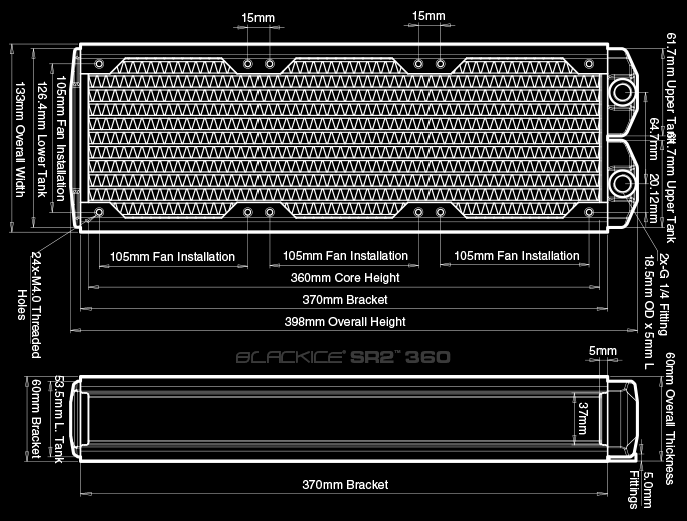
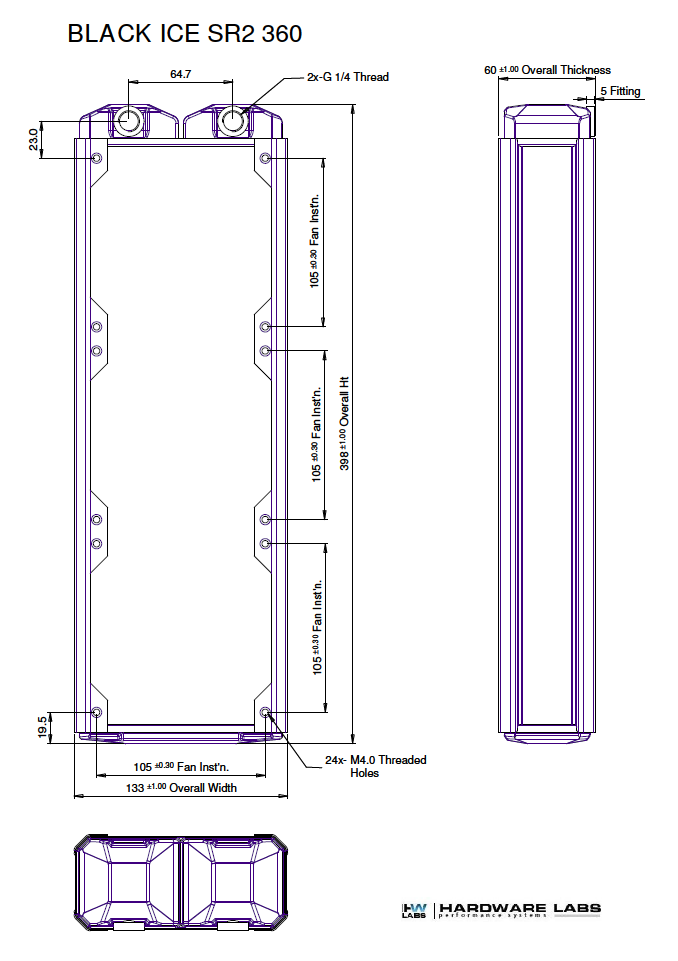
Dimensions Measured on the Radiator Tested:
 The (+4) and (+3) are the addition measurements if port plugs are fitted.
The (+4) and (+3) are the addition measurements if port plugs are fitted.
Note that +3mm on the thickness could be very important to some users depending on their fan assembly and installation orientation. With port plugs fitted and no fans attached to that side the rad could no longer mount flush against the case panel without the use of some type of shroud. It will not effect Push/Pull fan assemblies at all, but will affect some Push Only installations, so have a think about your intended use before committing to the multi-port version of the SR2.
HWLabs can eliminate this issue by recessing the ports on one side of the rad and hopefully the design change will be made before going into production.
The core is made up of 3 rows of 12 tubes arranged in the standard U-Flow configuration. The fin arrangement is made of single louvered fins with a 9 FPI count. The low fin count should equate to some decent Push Only results, but might not be so competitive in the Push/Pull comparisons.
This picture is a reference which shows a typical U-Flow coolant flow path, where the coolant travels up all the tubes on one side (left in pic) of the rad and then returns down the other side. U-Flow is most easily recognized when the port end has 2 separate tanks such as the SR2 has.
The single louvered fins are spaced very evenly between the tubes and here we see our 9 FPI count.
Finish and Features
The SR2 has a true Matte Black finish or Carbon Black as described by HWLabs and is my preferred finish for a radiator. It gives a subtle yet stylish finish which would look great in most builds. HWLabs are renowned for build quality and finish of their radiators and the SR2 keeps up the tradition with all visible joints appearing to be perfect.
The Multi-Port pre-release sample I received does not have the logo down the side on the casing as the current retail single port version does, but it won’t surprise me if the retail Multi-Port receives the same branding treatment.
The fan mount spacing is the standard 15mm.
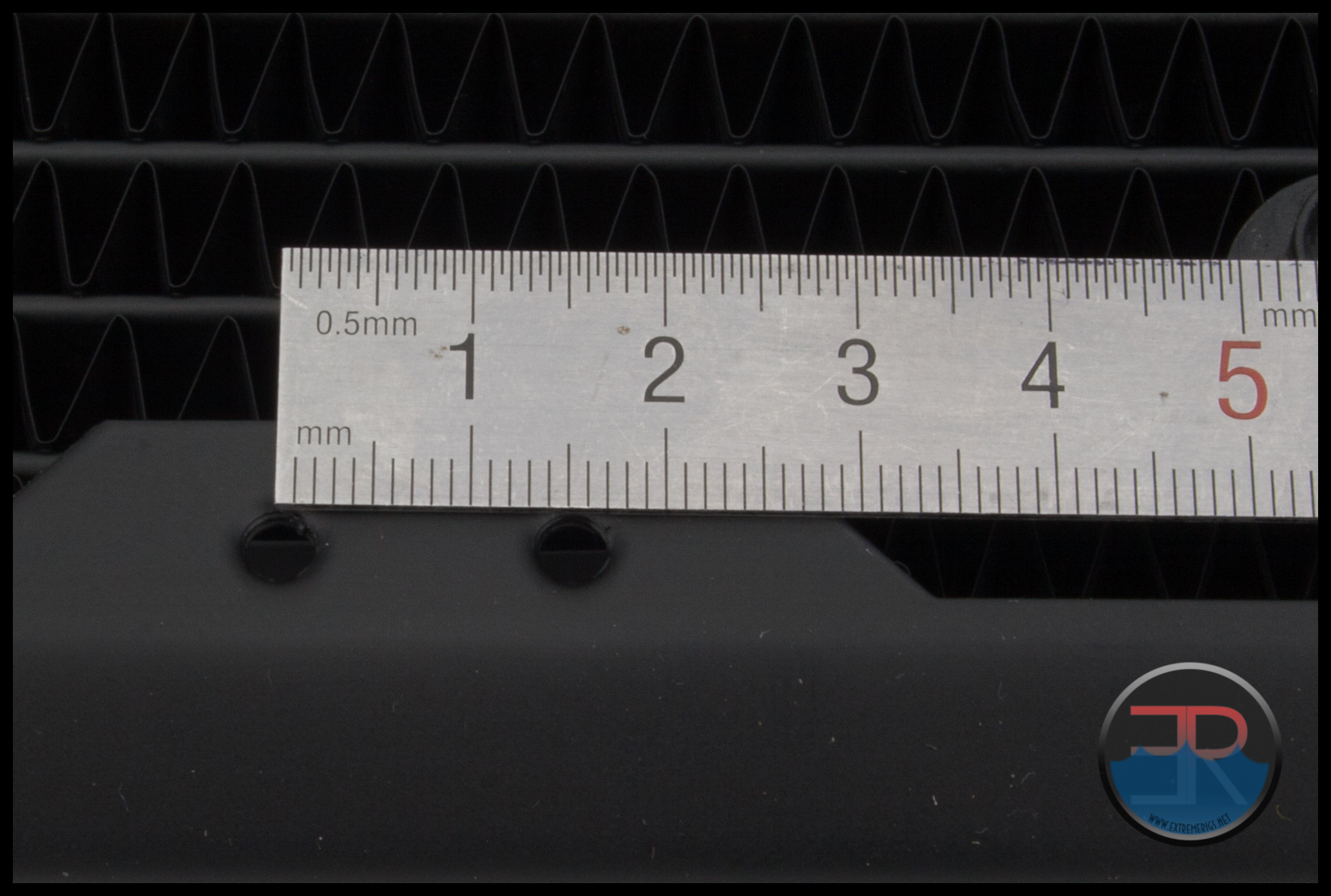 None of these mounting holes are located directly above tubes; however they are very, very close so it is great that HWLabs chose to incorporate protection plates.
None of these mounting holes are located directly above tubes; however they are very, very close so it is great that HWLabs chose to incorporate protection plates.
Still, care must be taken if you need to use custom length screws due to your mounting needs.
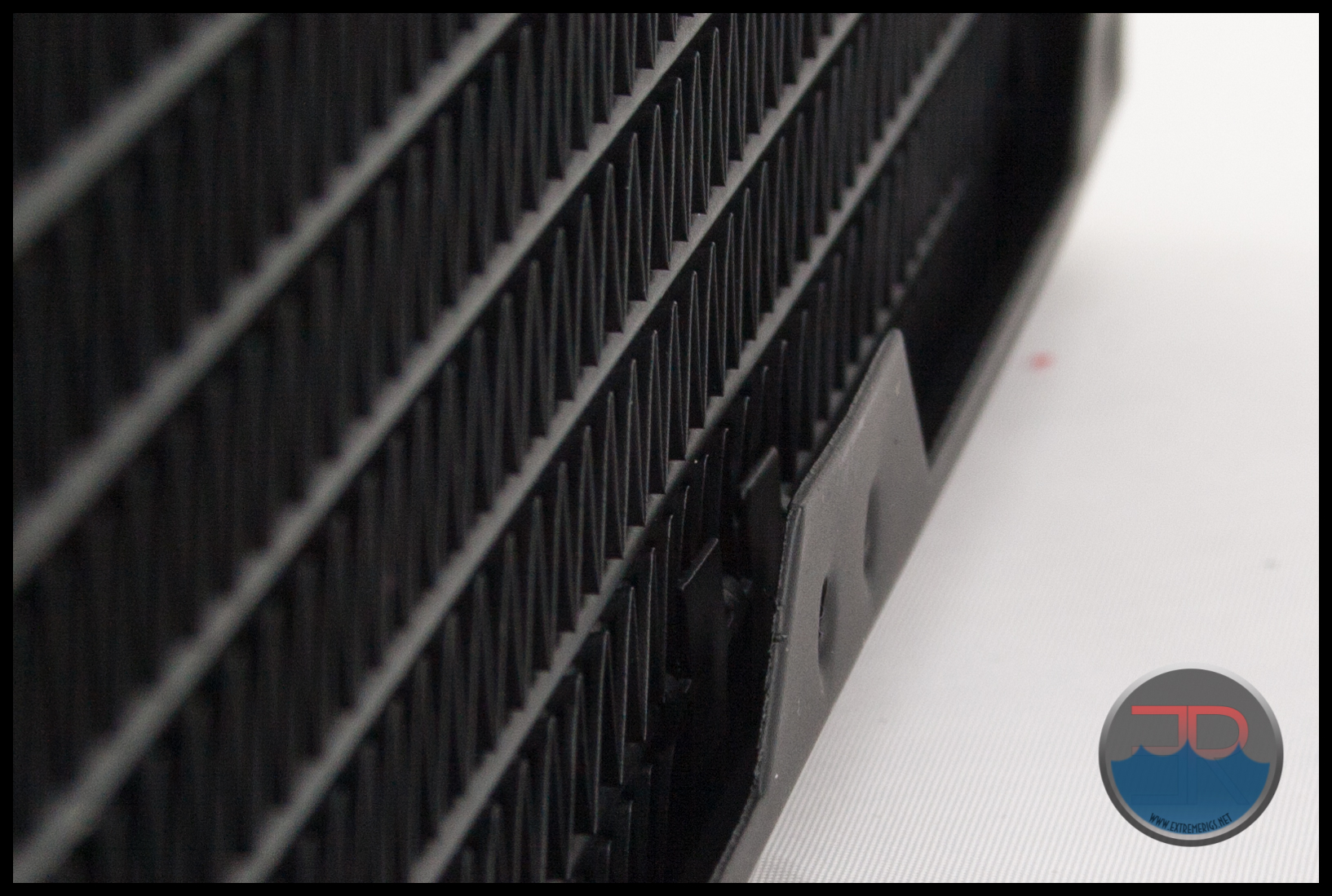 The SR2 Multi-Port come equipped with 6 ports in total, 3 each inlet and outlet to choose from. This heralds the start of HWLabs multi-port radiators and I hope they will be updating other models which are suitable for the multi-port option. “Opti Flow” Radiators like the Nemesis GTX would be unlikely to get this update due to its internal flow path configuration.
The SR2 Multi-Port come equipped with 6 ports in total, 3 each inlet and outlet to choose from. This heralds the start of HWLabs multi-port radiators and I hope they will be updating other models which are suitable for the multi-port option. “Opti Flow” Radiators like the Nemesis GTX would be unlikely to get this update due to its internal flow path configuration.
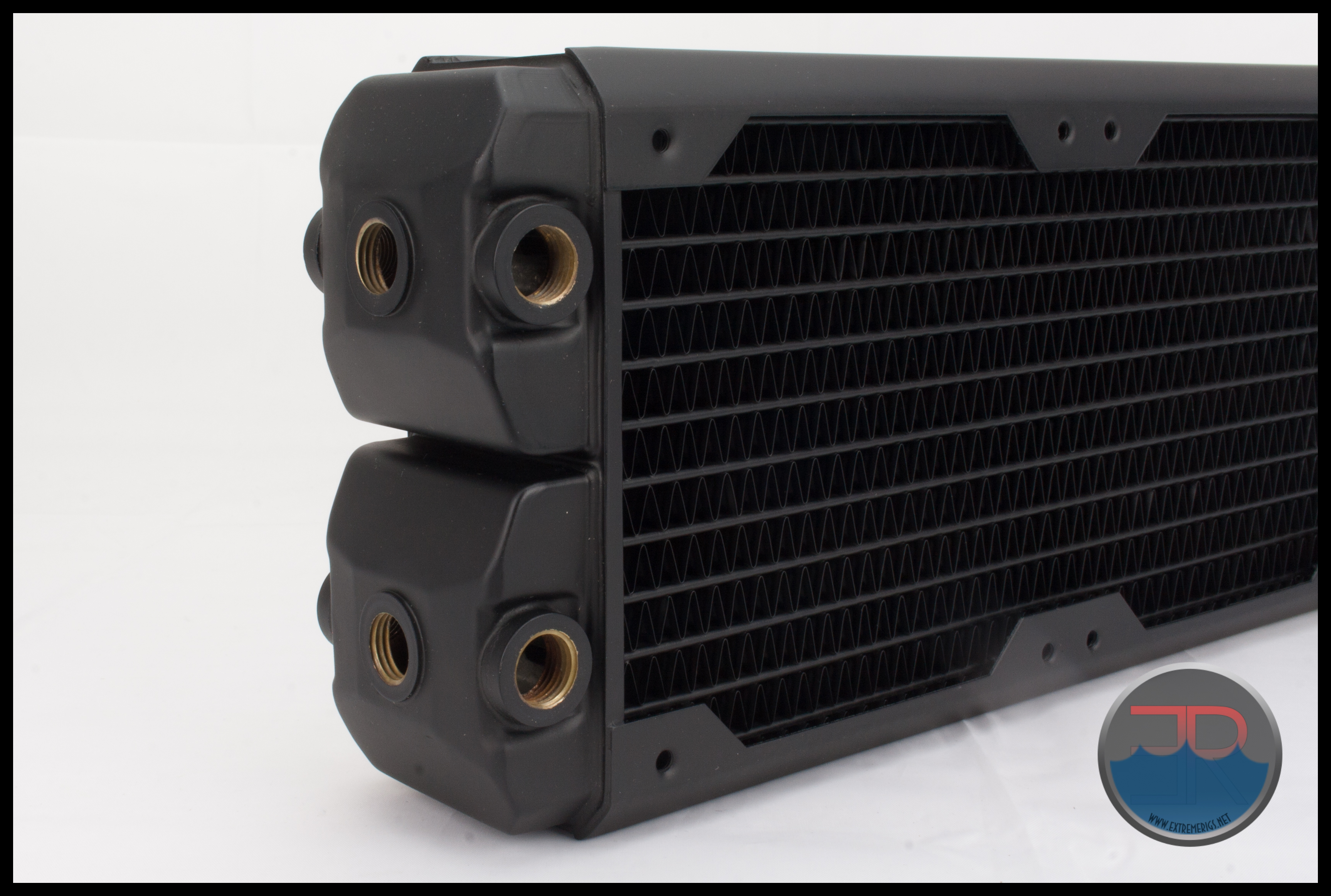 The extra ports give us options for dedicated fill or drain ports depending on the installation orientation. In addition the additional ports can allow for better tubing runs without the need for angled fittings. We love multi-port rads!
The extra ports give us options for dedicated fill or drain ports depending on the installation orientation. In addition the additional ports can allow for better tubing runs without the need for angled fittings. We love multi-port rads!
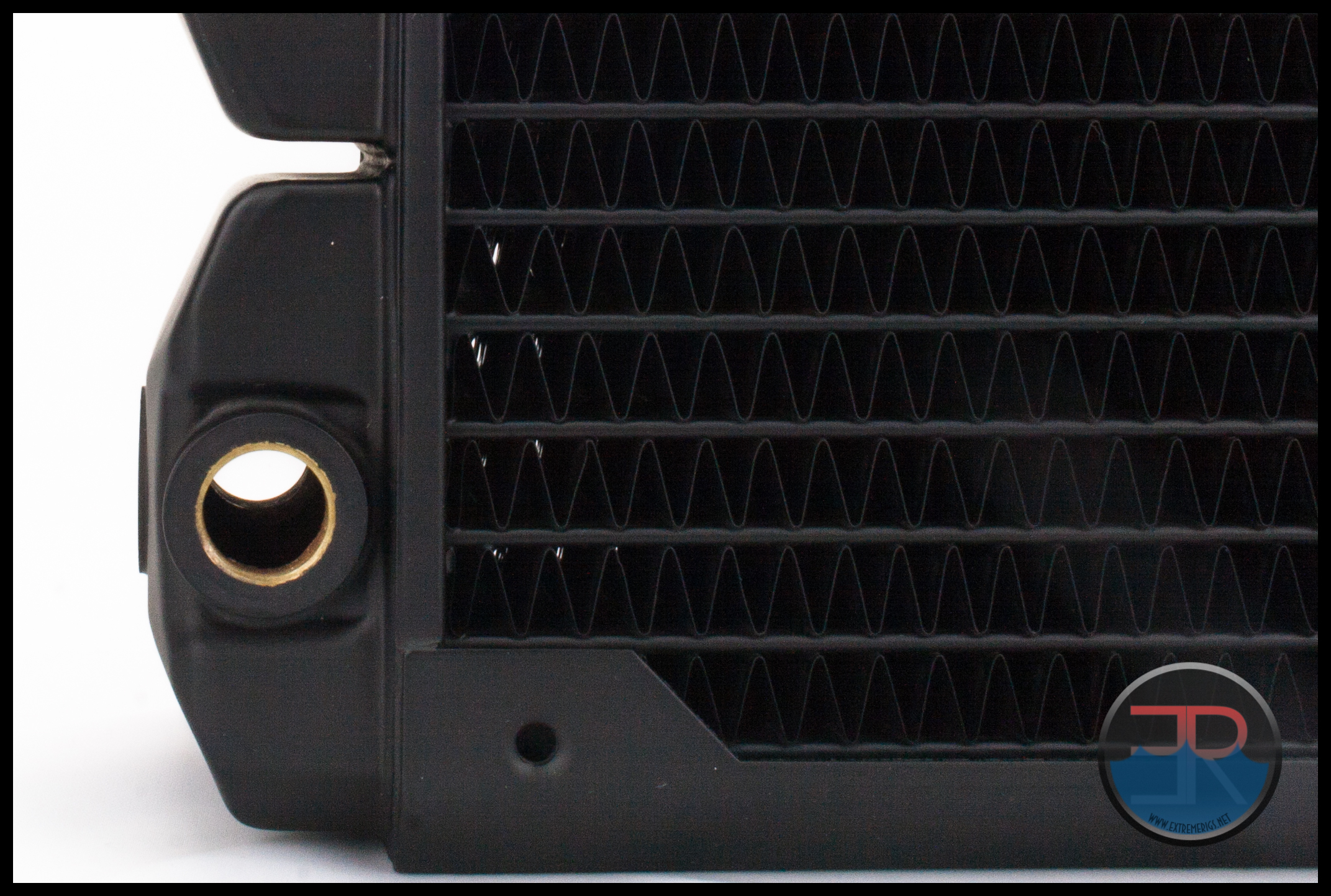
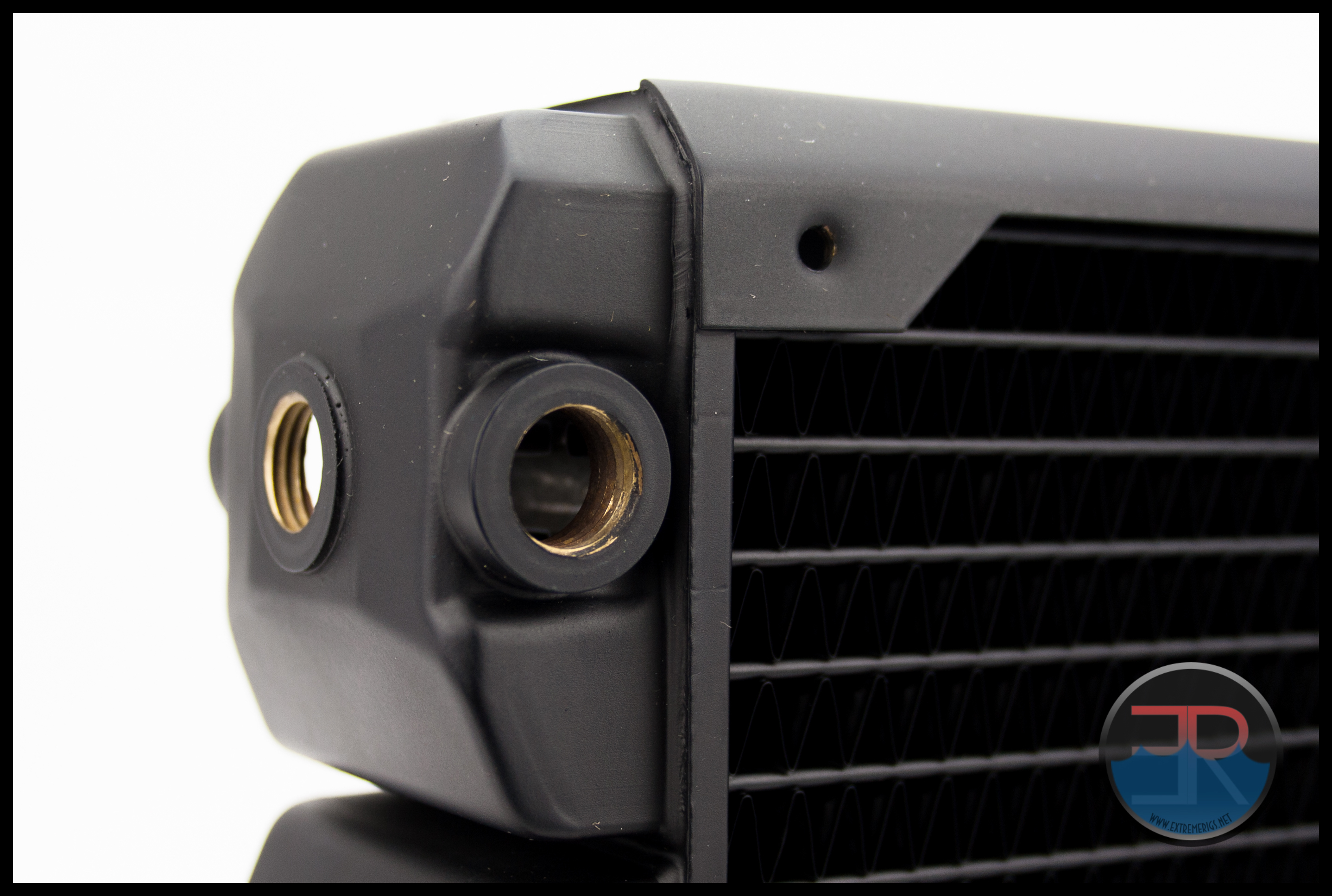 The SR2 looking great and ready for business.
The SR2 looking great and ready for business.
Unfortunately there is no dedicated fill/bleeder port on the return end tank. We hope that HWLabs takes on the feedback from its customers and that we see this port inclusion in future releases.
So here we have a thick rad with a low FPI count that is sporting additional ports. The matte black finish is excellent as is the overall build quality. So far so good.
Let’s see how it performs…







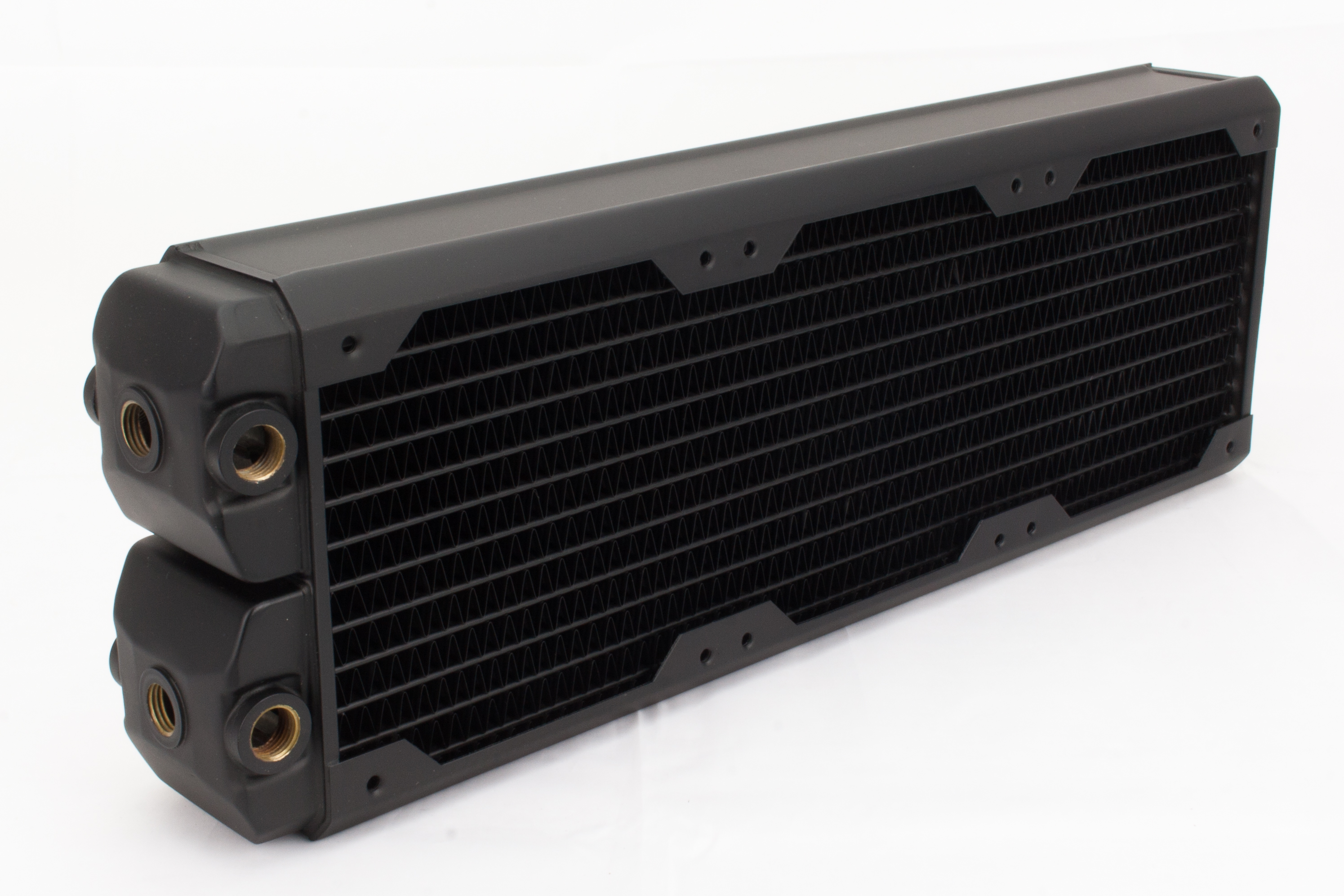

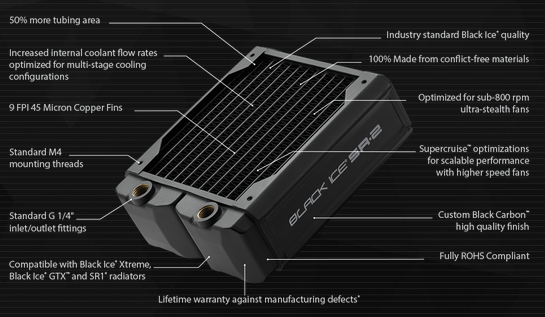

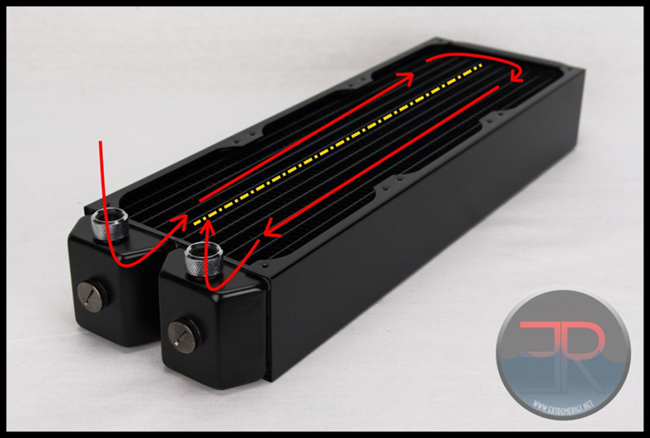
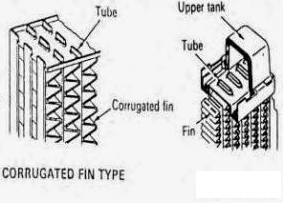
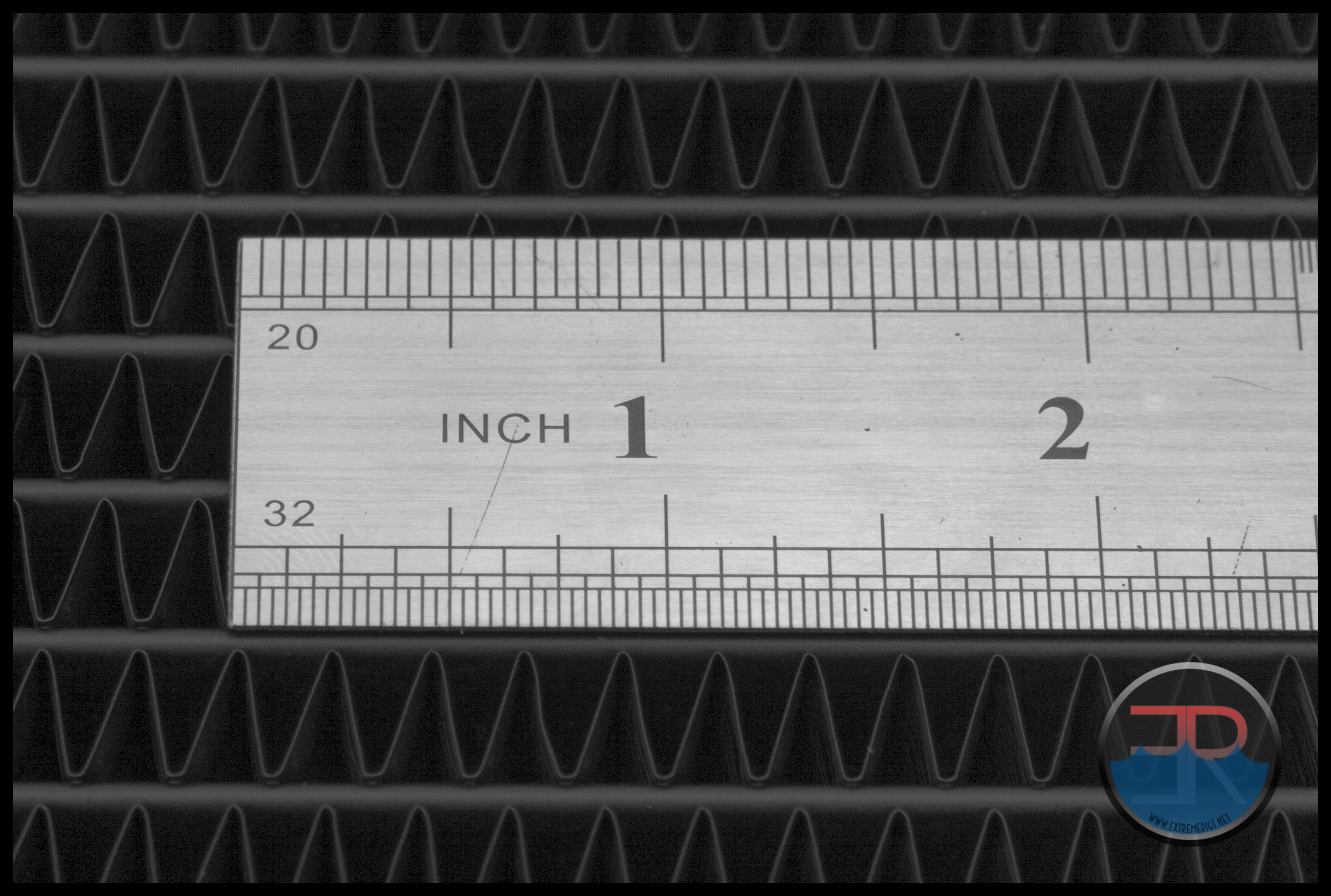
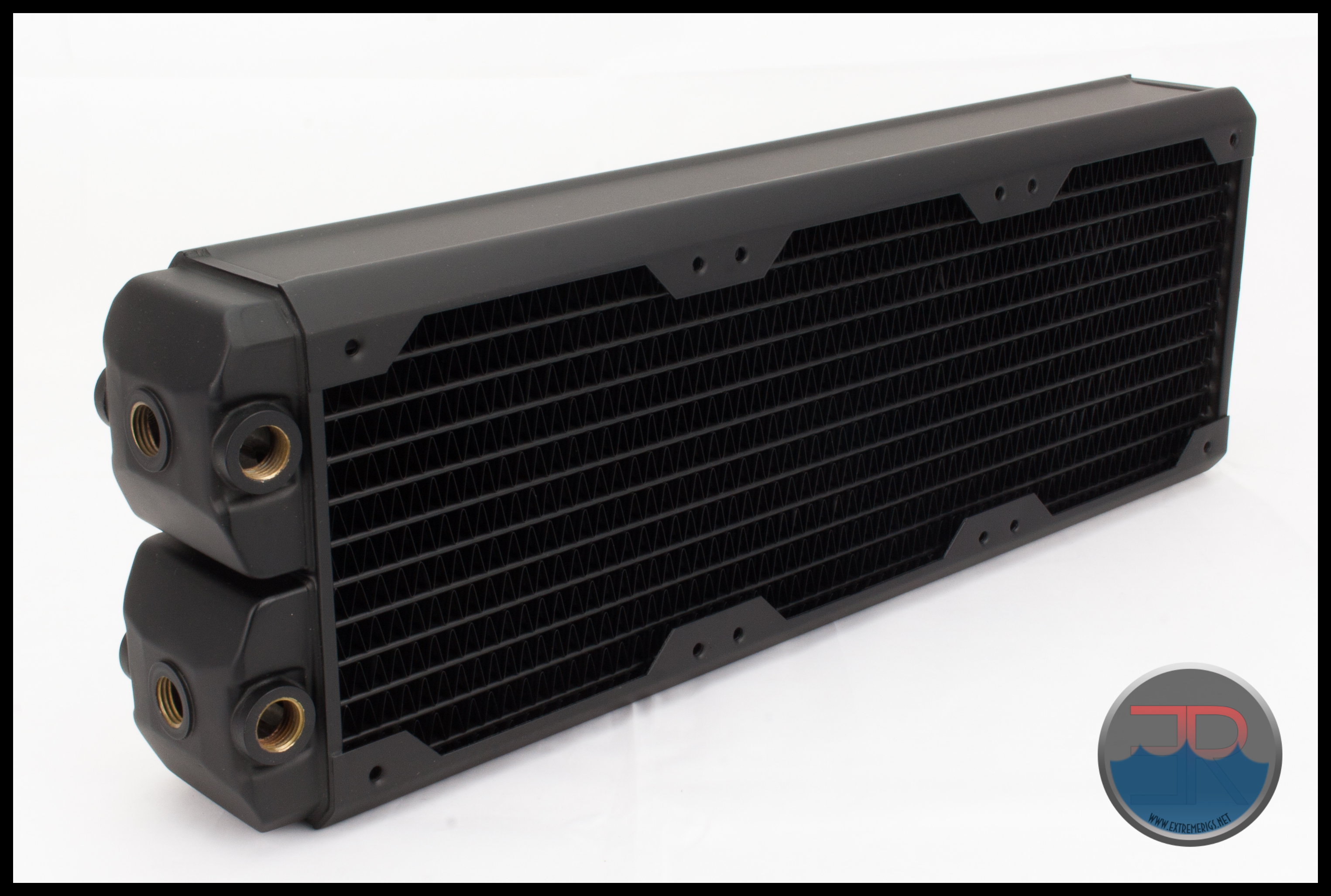
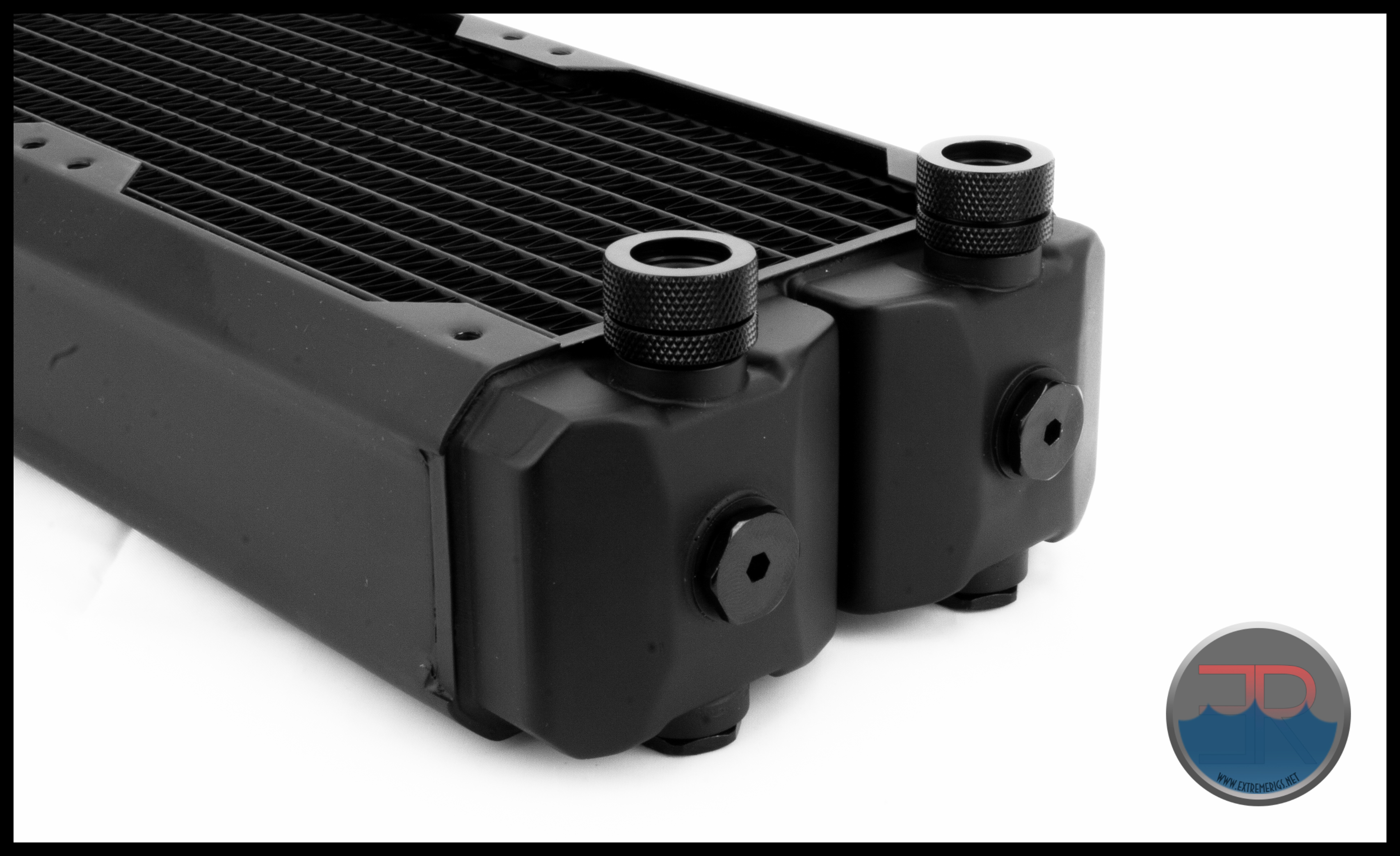
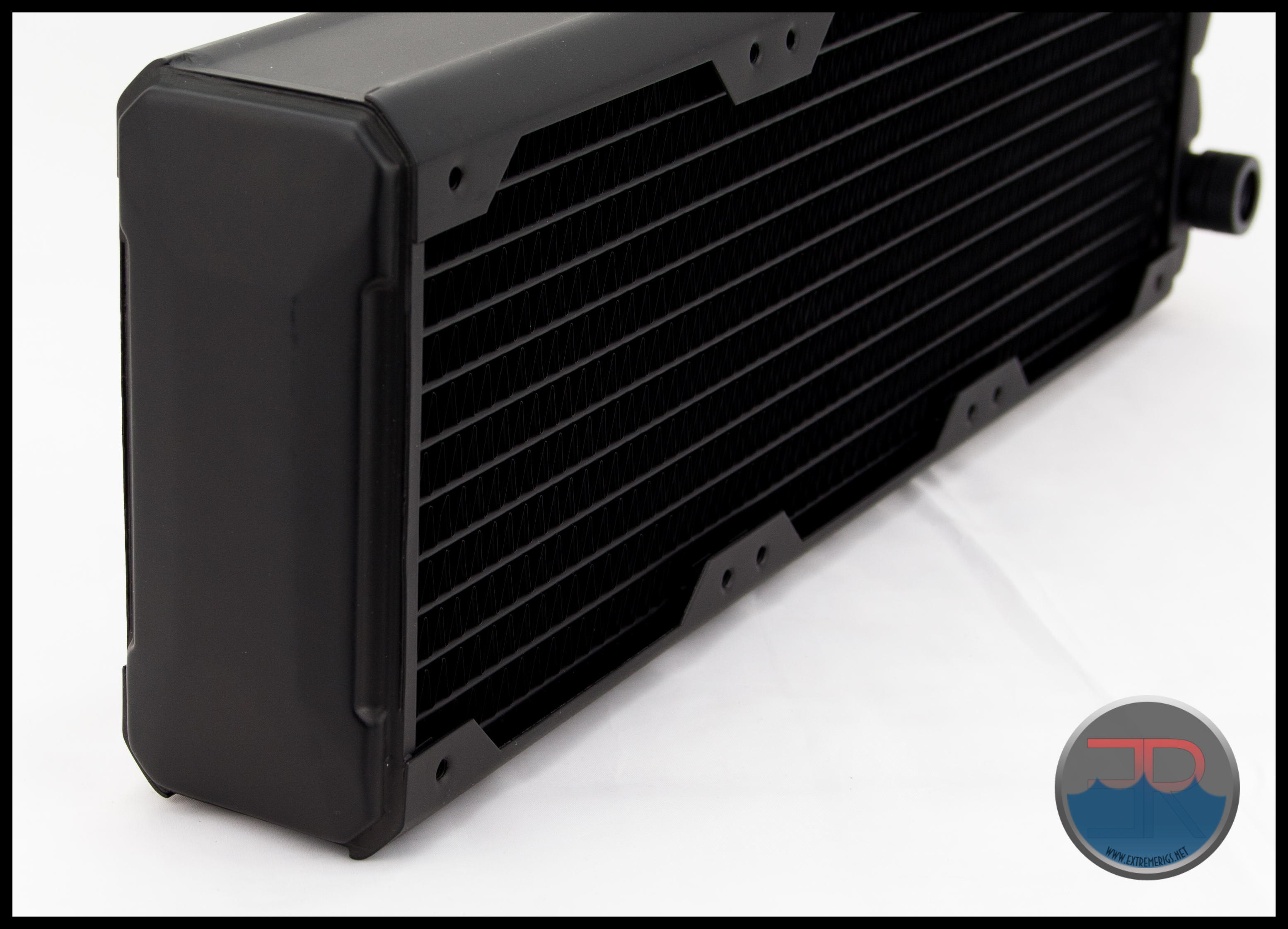



What are these “Opti-flow” versions of radiators? I can find no such variant on Hardware Labs website, only the “XFlow” variety.
Hey Thomas – the “optiflow” refers to radiators where the direction of coolant or airflow matters. “Optiflow” means that the “best” orientation is being tested. It only applies therefore to certain radiators with certain internal structures such as the Nemesis GTX or Black Ice GTX. The SR2 does not have any such directionality 🙂
Also on more thing to add – optiflow significantly helps lower flow rates when air flow is higher. If you run low airflow or high coolant flow then a directional radiator can be more of a pain than a gain.
Ah, thank you!
So between the SR2 and Nemesis GTX which performs better seems to be entirely down to the particulars of your setup then (as the Nemesis seems to straddle the SR2 results with and without opti-flow), will have to reread the Nemesis review as I don’t remember seeing anything about this issue.
Great work, love these reviews and the roundup comparisons (any chance there will be a 140mm variant of it some time too?).
Awesome review thanks for all the hard work!!
Nice review man,
I gotta get me on of this multiport when it comes out 🙂
Awesome review, I really want one too.
Great review as always
[…] Nemesis GTS 360 Radiator Hardware Labs Nemesis GTX 360 Radiator Hardware Labs SR-1 360 Radiator Hardware Labs SR2 360 Radiator Koolance HX-360XC 360 Radiator Magicool G2 Slim 360 Radiator Mayhem’s Havoc 360 Radiator […]
[…] a close look at the SR2 240 MP from Hardware Labs. We took a look a pre-production sample of the 360mm version for the round-up, so if the 360mm size is more your flavor be sure to check out it’s full review […]
If you don’t mind? What advice do you have to offer concerning the first model of SR2 radiator performance as compared to the SR2-MP? Is this simply a feature added change with the same performance? Or an attempt at both adding features while improving performance?
The SR2 and SR2 MP have the same core – there *should* be no performance difference and it should only be additional features 🙂
[…] up is the SR2 420 MP from Hardware Labs. We’ve already reviewed the 240 mm and 360mm versions of the SR2 MultiPort so be sure to check them out after you’ve finished reading this […]
[…] for sub-800 rpm ultra-stealth fans” which proved to be be an accurate statement when we tested the 360mm version earlier in the year. Will the 140mm perform as well ? We’ll find out how it performs and […]
Comments are closed.